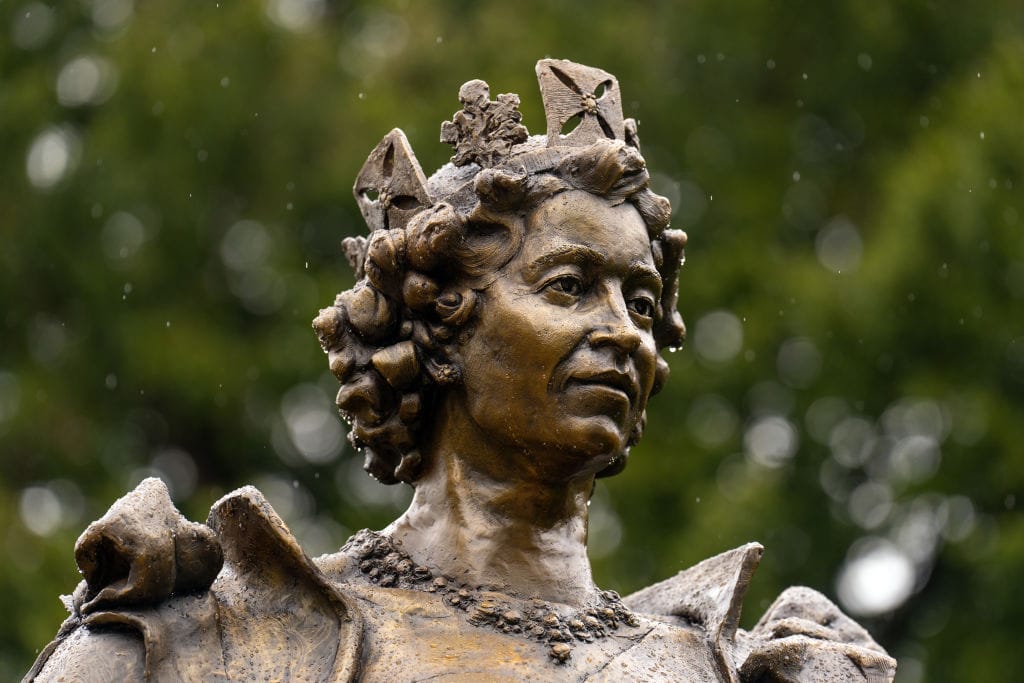
A great deal of people felt sorrow upon Queen Elizabeth II’s passing in 2022. She was adored by the public and the longest-reigning monarch in British history, having ruled for 70 years.
The late queen is now being honored with a monument that was recently unveiled, honoring her affection for her pet corgis!
The Queen’s new statue, together with her dogs
On Sunday, a 7-foot-tall bronze statue of Queen Elizabeth was unveiled in observance of the monarch’s 98th birthday.

In Oakham, England, the sculpture was made by artist Hywel Pratley and is situated close to the Oakham Library. It is Queen Elizabeth’s first ever permanent memorial.
Rutland City Council said that hundreds attended the unveiling. There was music from local school bands and bagpipers.
The most priceless feature of this new memorial is that the queen’s cherished Corgis pet is also depicted, immortalized in bronze by the monarch’s feet:

The city authority claims that local schoolchildren created the designs for the Corgi monuments.
In contrast to the many stern and imposing monuments of queens like Queen Victoria, Pratley stated he wanted the statue to portray the idea of Queen Elizabeth as “an almost motherly figure,” according to the New York Times.
During the unveiling, local dignitary Sarah Furness remarked, “What most of us remember about Queen Elizabeth is her warmth.” “We demonstrate Queen Elizabeth’s humanity by showcasing her affection for dogs.”

The statue’s creator claims that he intended it to be hospitable to onlookers. Pratley said, “We designed it with a bench you can sit on.” “And there’s a corgi you can pet, and I do believe that this will eventually become a selfie-encouraging statue.”
The Times reports that a number of Corgi owners brought their dogs to the unveiling, indicating that a large number of people have already visited the statue.
The history of Queen Elizabeth’s Corgis pet
For many years, the Queen’s corgis were an iconic aspect of her life and a solace during tough political and personal times. Fans all throughout the world were likewise pleased by the cute pets.
The first Corgi was acquired by the royal family in 1933 when Dookie, a dog owned by Elizabeth’s father and predecessor George VI (who was then the Duke of York), was brought home.

Dookie was reportedly extremely cantankerous, yet Elizabeth and him appeared to have a unique relationship.
Then, on her eighteenth birthday, the Queen received a Pembroke Welsh corgi of her own, named Susan.
Susan reportedly slipped under a rug in the royal carriage to disrupt the wedding of the Queen and her husband, Prince Philip, according to the BBC.
1959 saw Susan’s death at the age of almost fifteen. Her epitaph referred to her as “the faithful companion of the Queen,” and she was laid to rest at the royal estate of Sandringham House.
The Queen stated, “I had always feared losing her, but I am ever so thankful that her suffering was so mercifully brief.”
But Susan left quite the legacy; during the ensuing few decades, the Queen accumulated over thirty corgis, all descended from her original canine companion.
The Queen always had at least one corgi, and often had several at once, from 1933 until 2018. She traveled with the dogs in tow, and they resided in a designated “Corgi room” at Buckingham Palace with wicker beds. It is said that the Queen took care of them personally and baked them biscuits over the holiday season.

These canines undoubtedly received royal treatment and grew to represent the Queen throughout her life.
While Elizabeth valued the dogs greatly, Prince Philip apparently didn’t feel the same way. Like many others, she took great solace from the dogs, who served as a link to the simpler times in her early years due to their relationship with her late father and her upbringing.
According to Penny Junor, a royal biographer, “her corgis are hugely important to her.” Over time, they have become more intimate with her than any human has ever been. She has never been let down by the incredibly affectionate and devoted corgis.

It also makes sense that the Queen, who represents both Britain and the United Kingdom, would have a strong bond with a quintessential British dog. Wales, a member of the UK and a neighbor of England, is where corgis first originated. When corgis were adopted as royal dogs, the breed was rare in England; yet, the Queen had a major role in the globalization of the breed.
The Queen owned several “dorgis,” or corgis bred with daschshunds, in addition to purebred Pembroke Welsh Corgis.
When the corgis and dorgis appeared alongside Queen Elizabeth on the cover of Vanity Fair in 2016, they became well-known worldwide because to Annie Leibovitz’s photography. At the time, the dogs were Candy, Vulcan, Willow, and Holly.
A notable aspect of Queen Elizabeth’s reign and a significant aspect of her life were her corgis. Their inclusion in this first memorial statue of her seems so fitting.
Please tell this tale!
10 Curiosities You Probably Didn’t Learn in Biology Class
The world is a big, wonderful place full of facts we never thought possible. For instance, if a pregnant mouse has a sudden medical issue, the fetus will send stem cells to heal the mother, increasing its chances of survival as well. Fetal stem cells have been found in human mothers as well, dubbed by science as microchimerism.
Bright Side dug up some more marvelous facts about nature and its creations, upholding our yearly resolutions to spread knowledge and joy.
1. The heart slows when your face touches water.

As mammals, we can’t breathe underwater, so as part of the mammalian dive reflex, our heart rate goes down in the water — more so if we go underwater. Even splashing the face with water makes the heart slow down, making it a great way to calm down.
2. Fungus can break down plastic in weeks.
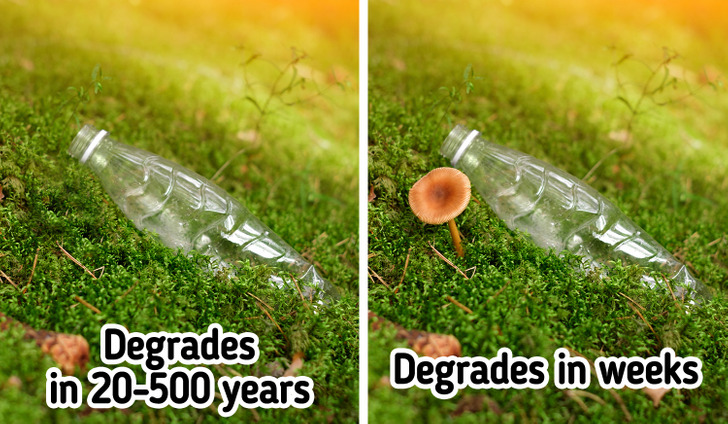
It is said that in the future, there may be more plastic in the ocean than fish. This is why the plastic-eating fungus is great news, and there are around 50 new species of such fungi discovered already. One of the fungi discovered can digest plastic within 2 months, so there’s hope for us yet.
3. Newborn babies can support their own weight.

Newborn babies are strong — strong enough to be able to grasp things in their tiny fists and even support their weight as shown by an experiment done in the nineteenth century. Louis Robinson witnessed babies able to hang from a walking stick, from 10 seconds to 2 minutes and 35 seconds.
4. Koala fingerprints have been mistaken for human ones.
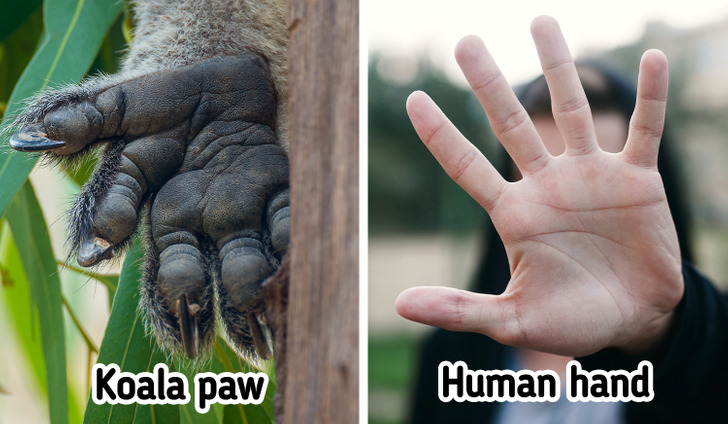
We’ve been told that our fingerprints are unique, and they are. But the fact remains that even though we share a common ancestor with the koala that was alive 100 million years ago, koala fingerprints look very similar to human fingerprints, as do chimpanzee fingerprints for that matter.
5. Snails can sleep for 3 years.
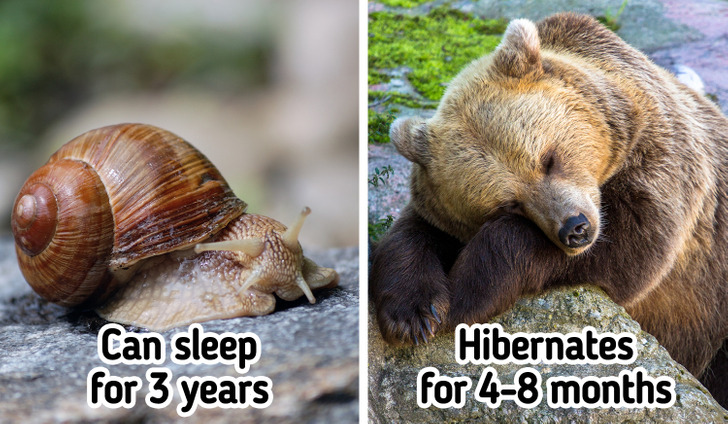
If you thought bears had it good with hibernation, meet the snail. Snails can sleep rather than hibernate for 3 years at a time without needing food. Of course, this is with some snail species, not all of them. Meanwhile, bears usually hibernate for just 4-8 months.
6. Sloths need 2 weeks to digest food.
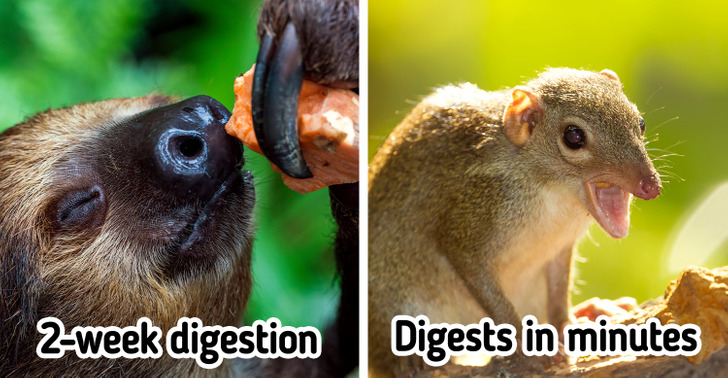
Sloths don’t only move in slow motion — even their insides move slowly, ostensibly to preserve energy, which is why a sloth’s digestive system takes 2 weeks to process the food it ate. Plus, most of what it eats is indigestible, giving it very little energy from each slowly chewed mouthful.
On the other end of the spectrum lies the shrew, whose digestion takes mere minutes and is done so fast, not much of it is fully digested. This is the reason why shrews eat their own feces. They can die of starvation in a matter of hours if they don’t eat.
7. Your brain ignores seeing your nose.
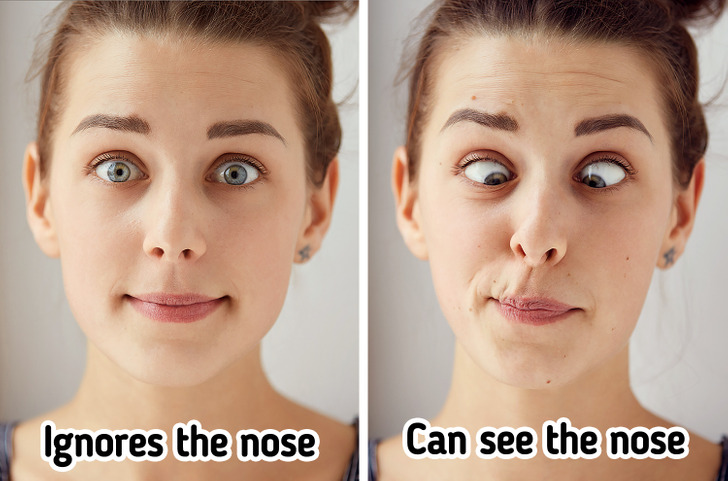
We can see our nose all the time, it’s just that the brain tends to ignore it because it’s a constant visual stimulus. It’s the same with people who wear glasses. After a while, they simply stop noticing them.
8. Your forearm is the same length as your foot.

If you don’t have the time to try on a shoe, measure it from your elbow crease to your wrist. If it fits or is just a little smaller, it would fit your foot because the length of your forearm is the same as your foot. And this is just one of many human body ratios that are a marvel in themselves, including the fact that your femur bone is one-quarter your height.
9. You can “see” your white blood cells.
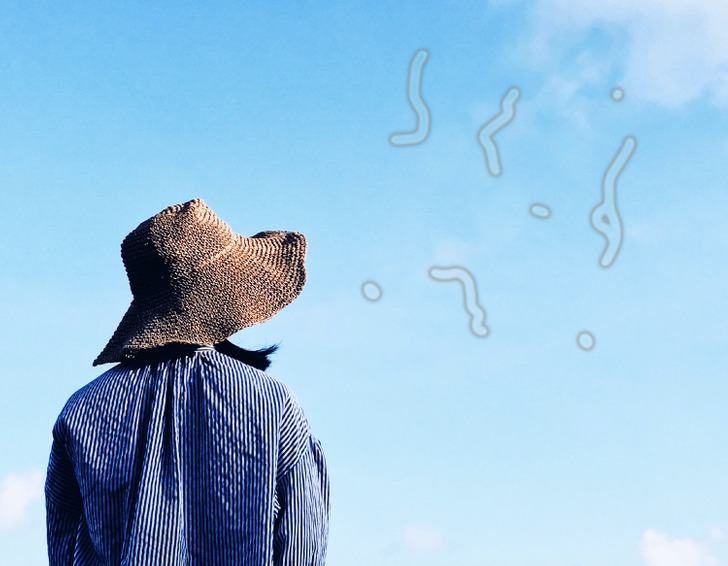
If you look up at a cloudless, bright blue sky and see some wiggly things at the periphery of your vision, you’ve just experienced the blue field entoptic phenomenon. The wiggly things are white blood cells moving in the fine blood vessels moving in front of the retina, at the back of the eye.
10. Human beings have striped skin, but only cats can see it.
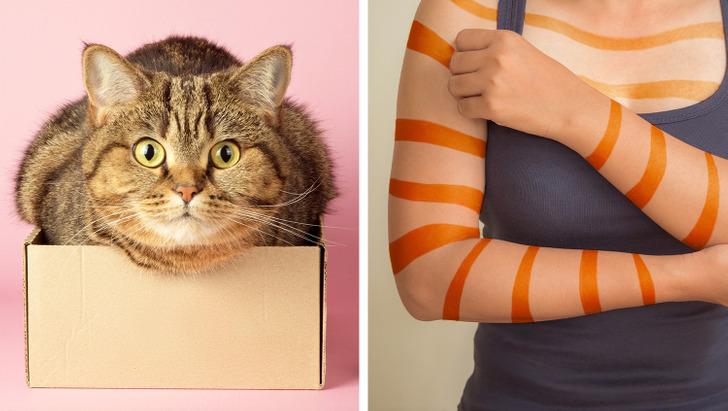
Human beings have stripes and patterns on the skin too, and they are called Lines of Blaschko, name eponymously by the scientist who discovered them, Dr. Alfred Blaschko. These are closer to tiger stripes, forming more of a V-pattern fanning out from the center to the extremities. These lines are visible under UV light, a spectrum that cats can see too, which is why cats can see you as a striped being as well.
Which of these facts turned out to be a revelation for you? Share your extreme nature facts with us and blow us away.
Preview photo credit Shutterstock.com, Shutterstock.com




Leave a Reply